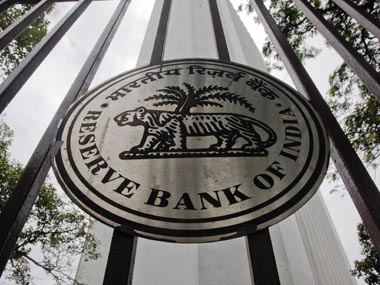As the Reserve Bank of India gets set to unveil its Monetary Policy Statement for 2013-14 on 3 May, there’s a general consensus building up that the central bank will oblige the government and the corporate sector with another repo rate cut, widely expected to be of 25 basis points. Latest data points to inflation trending lower, commodity prices are broadly in control and growth needs a serious boost. Hence, experts believe this time too, RBI will lower the benchmark repo rate since there’s been some relief on the inflation front.
On 2 May, the factory output print came in for April, with the reading at just 51, the lowest recorded since November 2011. The HSBC Purchasing Managers’ Index is an indicator drawn from individual indices measuring changes in output, new orders, employment, supplier delivery times and stocks of purchases. A reading over 50 indicates expansion, but 51 is not something to cheer about.
[caption id=“attachment_745787” align=“alignleft” width=“380”] Viewed from these angles, the case for a rate cut this time is strong. Reuters[/caption]
Viewed from these angles, the case for a rate cut this time is strong. In fact, some experts feel RBI would do well to go deeper into the rate-cutting cycle and top it up with moves to ensure better transmission - by cutting the cash reserve ratio (CRR) and open market operations (OMOs) in 2013-14.
The reasons why a rate cut is most expected are many. The consistent downward movement in inflation points to further easing on the WPI front.
Besides, demand destruction, Kotak Mahindra’s chief economist Indranil Pan argues, has been meaningful and has been reflected in the sharp erosion in the producers’ pricing power and also in core inflation. The weakening inflation trajectory, together with the easing of commodity prices points to an average of 5.5-6 percent for FY2014 for wholesale inflation, as against 7.4 percent in FY13, Pan says.
So much so, Pan and others are betting on a 75 bps rate cut to 6.75 percent in FY14, together with CRR cuts to the tune of 50 bps and OMO of Rs1.2-1.4 lakh crore. Bankers have also argued in favor of sweetening the rate cuts with CRR cuts and OMOs to enable better transmission of monetary policy.
Experts reckon the earlier tight monetary stance of RBI has finally begun yielding results, and hence inflation has moderated, with the latest reading of 5.96 percent in March, much lower than RBI’s own estimate. It’s time for a counter-cyclical policy stance with deeper cuts, this school of thought believes. While there’s little room on the fiscal side at this point, it is felt that the easing macro and global headwinds – with crude oil prices in particular moving down - provide RBI with just the right opportunity to effect a deeper dive into the monetary easing cycle.
Bankers like Rana Kapoor, Founder, MD and CEO of the private sector YES Bank feel the RBI could gradually cut rates to the tune of 100 basis points in FY14 to revive growth, given that inflation is gradually coming under control.
“The government has also proactively played its part by walking down the path of fiscal consolidation. This will bring relief to the corporate and SME sector by reducing the interest burden and will also play a role in de-risking from an asset quality perspective, a predominant concern in public sector banking,” Kapoor says.
Kapoor says he expects expect banks to pass on the benefit of lower interest rates to the corporate and retail sectors over a period of time. “Further proactive reform measures have increased the business confidence and with growth expected to return, we believe we could be past the bottom of the asset quality cycle,” he adds.
Bankers and economists point to global and domestic factors for the sharp hit on the growth rate. The weak European economic outlook, the BRICs slowdown and a slow US recovery are continuing to impact FDI flows. While global GDP growth is expected to improve slightly in 2013, uncertainties loom. The worsening domestic growth-inflation dynamic has meant that the savings-investment balance has deteriorated. Financial savings dropped, making way for physical savings, led by items like gold which further impacted the current account deficit.
However, despite the obvious factors for a deep rate cutting cycle, experts also put out caveats saying the window of opportunity created by softening global commodity and crude prices were somewhat counterbalanced by a continuing drag by way of the CAD/GDP balance which still remains higher than the RBI comfort zone. Pan, therefore, advocates rate-cutting in a linear manner, in small doses.
But all this aside, there is another set of reasons why RBI Governor Duvvuri Subbarao could yet surprise the markets by not doing much on rates. As R Jagannathan argues in an article on Firstpost, the consumer price index (CPI) still continues to be a worry for RBI and is in double digits. The fuel pass-throughs aren’t complete and this is also a pre-election year.
A lot will depend on how RBI reads the macro signals and weighs them against the domestic imperatives. For now, the scale appears tilted in favor of a rate cut and continued monetary easing. But when the situation is as fluid as it is, caution will remain the buzzword for the central bank.


)
)
)
)
)
)
)
)
)



